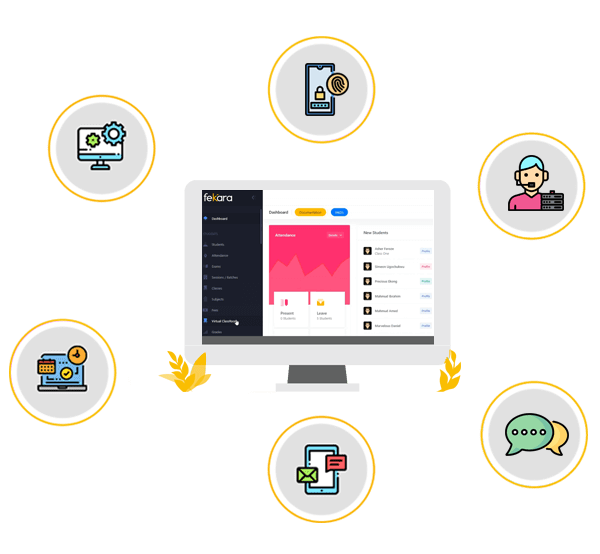In today’s rapidly evolving educational landscape, technology has become an indispensable tool for educators seeking to create dynamic and efficient classroom environments. One of the most transformative technological innovations in the field of education is the implementation of school management software. This powerful tool is not only streamlining administrative tasks but also empowering teachers to enhance their classroom management strategies and provide a more enriching educational experience for their students.
1. Streamlining Administrative Tasks: Redefining the Teacher’s Role
Traditionally, teachers have found themselves bogged down by administrative tasks, such as attendance tracking, grade calculation, and communication with parents. These responsibilities often consumed a significant portion of their time and energy, leaving them with limited opportunities to focus on their primary role: teaching. However, with the integration of school management software, these mundane tasks are being automated, enabling educators to reallocate their efforts toward impactful teaching practices.
2. Efficient Attendance Management: More Time for Instruction
Managing attendance is a fundamental aspect of classroom management. Manual attendance taking can be time-consuming and prone to errors. School management software offers a digital solution that enables teachers to swiftly record and access attendance data. This feature not only saves time but also allows teachers to identify attendance patterns, facilitating early intervention for students who might be struggling.
3. Streamlined Gradebook Management: Facilitating Student Progress Tracking
The traditional gradebook, filled with handwritten entries, is becoming a relic of the past. School management software equips teachers with digital gradebooks that automatically calculate grades, provide instant access to progress reports, and even allow students and parents to monitor academic performance in real-time. This transparency encourages a collaborative approach to learning, as students and parents become active participants in the educational journey.
Read more here
4. Seamless Communication with Parents: Fostering a Supportive Learning Environment
Open lines of communication between teachers and parents are essential for a child’s academic success. School management software offers a convenient platform for teachers to send updates, announcements, and individualized messages to parents. Whether it’s a note about a student’s achievements or a concern about their progress, this communication channel bridges the gap between the classroom and the home, promoting a holistic approach to education.
5. Personalized Learning: Tailoring Instruction to Individual Needs
Every student is unique, with distinct learning styles, strengths, and challenges. School management software can collect data on students’ performance and engagement, allowing teachers to identify trends and adapt their instructional strategies accordingly. With this insight, educators can offer personalized support to struggling students and provide enrichment activities for those who are excelling.
6. Collaborative Lesson Planning: Sharing Resources for Enhanced Teaching
Collaboration among educators is a cornerstone of professional growth and instructional excellence. School management software enables teachers to share lesson plans, teaching resources, and best practices within a centralized digital environment. This fosters a culture of collaboration, where teachers can learn from each other’s successes and challenges, ultimately benefiting both teachers and students.
7. Digital Assignment Submission and Grading: Enhancing Efficiency
Gone are the days of collecting stacks of handwritten assignments and manually grading them. With school management software, teachers can assign tasks digitally, receive submissions online, and provide feedback electronically. This not only accelerates the grading process but also allows for detailed feedback that aids in student improvement.
8. Real-Time Analytics: Informed Decision Making
Data-driven decision-making has become a cornerstone of effective teaching. School management software gathers data on student performance, attendance, and engagement. Through data analytics, teachers can identify trends, strengths, and areas that need improvement. This information guides instructional planning, enabling educators to make informed choices to enhance student outcomes.
Conclusion
In conclusion, the integration of school management software has brought about a significant paradigm shift in the way teachers manage their classrooms and engage with students. By automating administrative tasks, enhancing communication, and providing valuable insights into student performance, this technology empowers educators to focus on what truly matters: fostering an engaging, personalized, and effective learning environment. As we move forward in the digital age of education, school management software stands as a testament to the potential of technology to revolutionize teaching and elevate the educational experience for both teachers and students.
About Author
Meet Rabia Rasheed, a passionate writer with a keen interest in sharing valuable insights and tips on school management systems, particularly eSchool. As an expert in this field, Rabia has a wealth of knowledge and experience that she is eager to share with educators and school administrators alike. So, without further ado, let’s dive into the world of the school management system with Rabia Rasheed.





